Appearing since the 17th century, the Cong people came to remote mountains and streams to build a culture rich in identity on Vietnamese territory. From colorful, graceful costumes to festivals... all have created a cultural beauty hidden among the vast mist and clouds.
The Cong ethnic group, also known as the Xa and Mang ethnic groups, reside in the Northwest region, mainly in the provinces of Lai Chau and Dien Bien . This is one of the ethnic groups with a population of less than 10,000 people that still preserves many unique traditional cultural features.
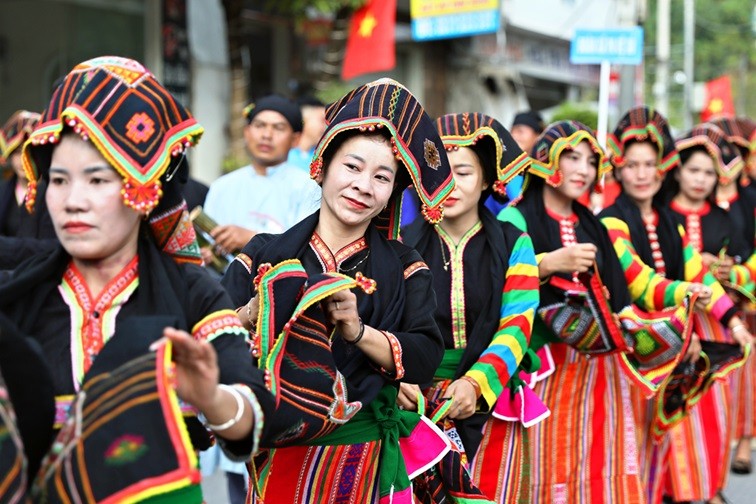 |
| Traditional costumes are also a beautiful identity of the Cong ethnic people. (Photo: Tran Cong Dat) |
Unique cuisine and costumes
The daily meals of the Cong ethnic group are mainly rice or sticky rice, along with meat and vegetables like other ethnic groups in the area. In addition, life is closely connected with nature, the dishes of the Cong ethnic group also originate from nature. On holidays and Tet, the rice sprouts to worship ancestors must be full of dishes including pork, sticky rice, whole chicken, corn cake and wine.
According to artisan Ly Thi Giong in Nam Khao commune, Muong Te district, Lai Chau province, corn cakes, yam cakes, rice cakes, crabs stuffed with corn, dried fish, dried meat... are typical dishes of the Cong people, especially during festivals. All Cong people know how to make these cakes and invite shamans to perform rituals on each occasion. In addition, cha kha cha vang is also a popular dish of the Cong people. Cooked from pig's blood with vồn vn leaves and bitter herbs, this dish is often used to treat stomach ailments or eaten when having a stomachache.
Stone crabs are also treated in a very special way by the Cong people. Because of the belief that crabs are animals that protect crops, crabs must be caught from clear streams, cleaned, split in half, all the meat removed, then stuffed with corn flour and put back together into the shape of a crab, and then served on a tray. In the 8th lunar month, when the New Year is celebrated, the Cong people often tie crabs to hunting and gathering tools so that the shaman can perform a ritual to worship the tools.
Traditional costumes are also a beautiful identity of the Cong ethnic group. Men wear black indigo clothes, with buttons tied with cloth knots. Women are more elaborate and combine them with jewelry. Unmarried women will have their hair in a bun at the back, married women will have their hair in a bun on top of their head. On the bun, there are hairpins on both sides symmetrically, with silver coins attached.
The Cong women's headdress is a Pieu scarf similar to that of the Black Thai. They often use silver or gold jewelry to enhance their feminine beauty and protect their health. Cong women wear two types of shirts. One type is long, consisting of alternating blue, red, yellow, and white panels combined with unique embroidered patterns on the hem. The other type has black sleeves, a shirt with a split chest, buttons along the hem decorated with silver buttons and colored threads. Cong people wear shirts combined with floral or black skirts, with ancient patterns.
When coming to Nam Khao commune, the girls here are proud that every house has a Bem. This is a dowry item from the mother to the daughter containing fabric, clothes and jewelry. The Bem is always placed under the altar and never moved. With the excellent weaving technique of the Cong people, the Bem does not rot or get moldy over time but is always thick and fresh.
Unique national culture
In addition to the New Rice Offering Festival, the Cong people have many other special New Year celebrations. The village offering ceremony is held in the third lunar month, before the sowing season. The village builds a gate and places a taboo sign that no one is allowed to enter the village for one day. Offerings include only fish and crabs, praying that birds and animals will not cause harm, and planting a few clusters of shallots to pray for good, green rice.
When offering tobacco to the "forest ghosts", the Cong people often take tobacco, place it on leaves, and then put it on a rock. After the offering, they bathe. According to the beliefs of the Cong people, "forest ghosts" are the strongest ghosts that often harm people. When invited to smoke, the happy forest ghosts will not harm people anymore. In the past, if someone in the family was sick, they would also offer tobacco to the forest ghosts. Whatever illness they had, the corresponding animal would be chosen according to the illness.
Corn Festival (late May, early June of the lunar calendar) when the corn season has been harvested. Corn has been the main food crop of the Cong people for hundreds of years, so the main offerings during the Corn Festival are mostly made from corn.
In the past, the Cong people had the custom of living with the wife's parents for 8-12 years to take care of their parents-in-law as a way to show gratitude for their birth. Nowadays, this has been reduced to 2-3 years, and the custom of living with the wife's parents is no longer there. The wedding ceremony is held during the off-season, around November and December of the lunar calendar. The bride's parents give her a dowry including: blankets, mattresses, clothes, knives, hoes, spades, a pig, and a hen.
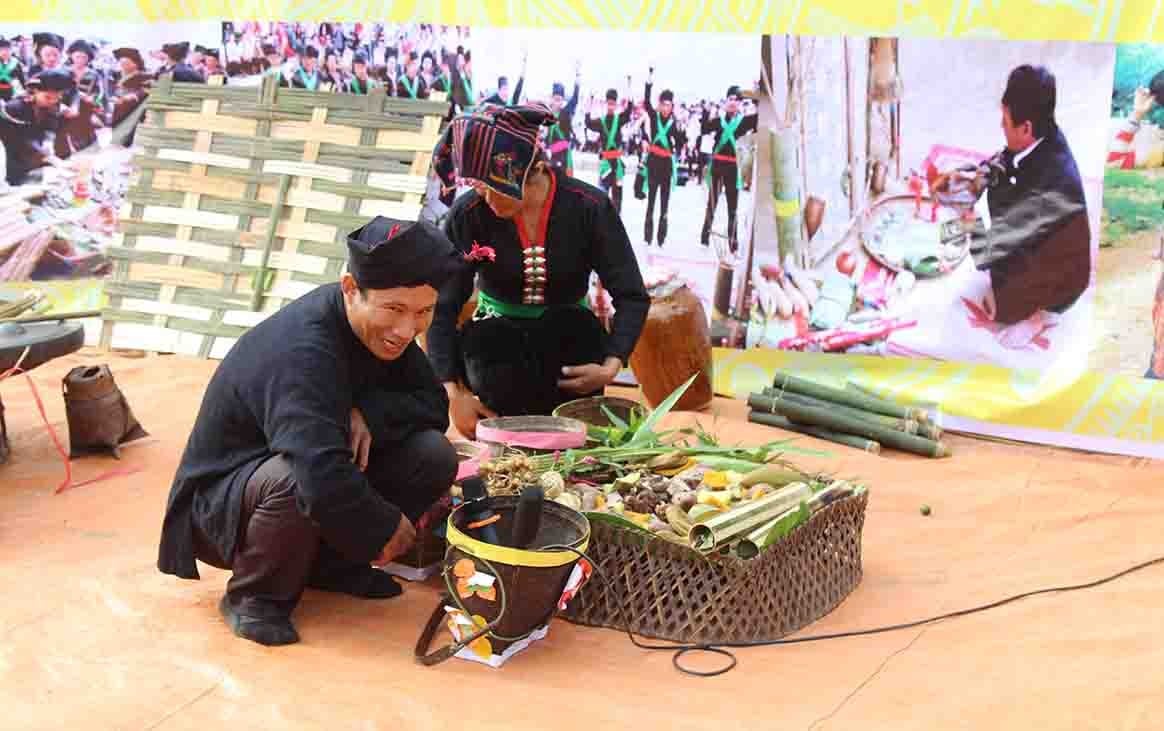 |
| In addition to the New Rice Offering Festival, the Cong people also celebrate many other special New Year holidays. (Source: Lai Chau Newspaper) |
The Cong people attach special importance to the ritual part: the ceremony. Before sending their daughter to her husband's house, the bride's family will perform the ceremony with the most solemn and sacred rituals. The main meaning of the ceremony at the bride's family is to "cut off the hồng" of the girl from the altar of the bride's family (that is, the girl is no longer part of the family's ancestral altar). After welcoming the bride home, the groom's family must also perform the "nhập hồng" ceremony to "enter" the bride into the family altar, the groom's ancestors...
Born from the forest, raised from the mountain ravine, therefore, the Cong Nam Khao people, Muong Te district, have a cultural treasure imbued with the colors of the mountains, forests, trees, flowers, birds and animals. They use songs to relieve the fatigue of work, to share their care and affection for each other, to express their feelings to their loved ones. Combined with Cong folk songs are folk dances such as Py Luym dance, hoop dance, integrating members with the community, between members with each other, thereby creating a strange attraction.
Through the historical process, the Cong people (Muong Te, Lai Chau) have been promoting the values of national identity to "integrate without dissolving", contributing to the promotion of the economy and society. Currently, 100% of households have cultivated land and are supported by the State to reduce hunger and reduce poverty, learn rattan, bamboo, and weaving for export abroad; trade in ethnic specialties such as food and traditional medicine, thereby shortening the gap with other ethnic groups.
Source




![[Photo] Binh Trieu 1 Bridge has been completed, raised by 1.1m, and will open to traffic at the end of November.](https://vphoto.vietnam.vn/thumb/1200x675/vietnam/resource/IMAGE/2025/10/2/a6549e2a3b5848a1ba76a1ded6141fae)







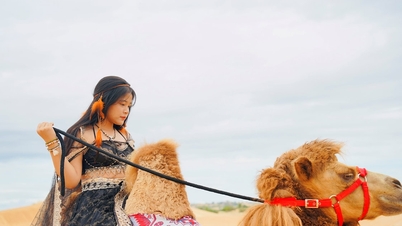


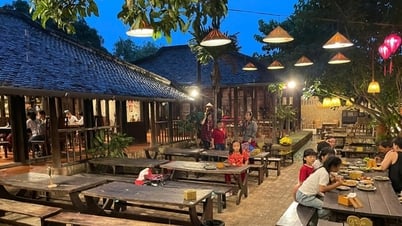





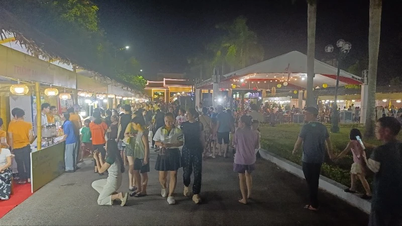

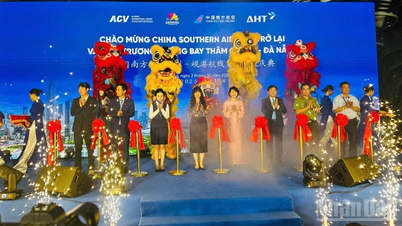
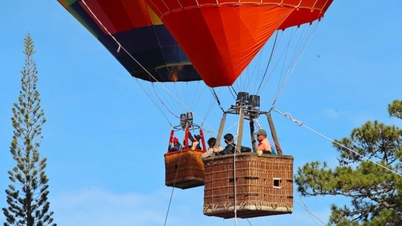


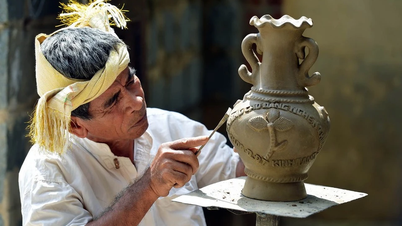






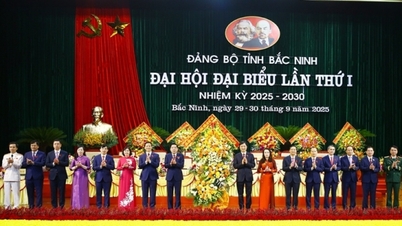
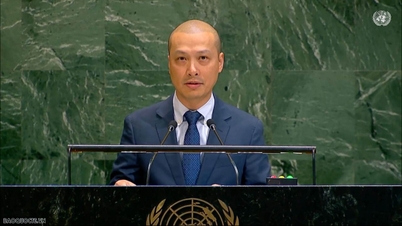
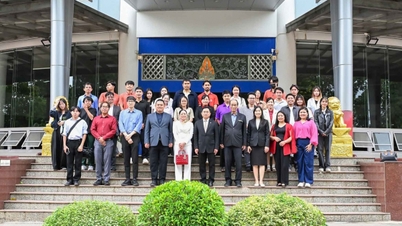


































































Comment (0)